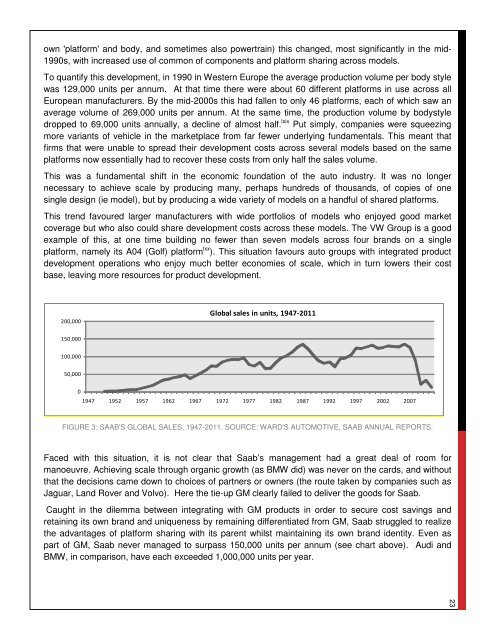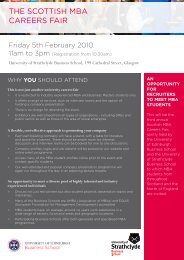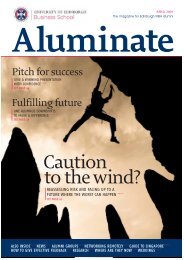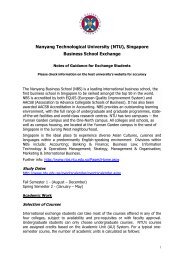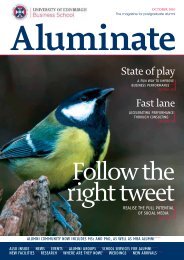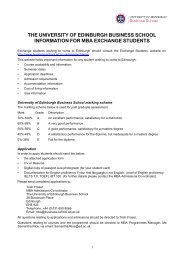killed Saab Automobile? - Business School - University of Edinburgh
killed Saab Automobile? - Business School - University of Edinburgh
killed Saab Automobile? - Business School - University of Edinburgh
Create successful ePaper yourself
Turn your PDF publications into a flip-book with our unique Google optimized e-Paper software.
own 'platform' and body, and sometimes also powertrain) this changed, most significantly in the mid-<br />
1990s, with increased use <strong>of</strong> common <strong>of</strong> components and platform sharing across models.<br />
To quantify this development, in 1990 in Western Europe the average production volume per body style<br />
was 129,000 units per annum. At that time there were about 60 different platforms in use across all<br />
European manufacturers. By the mid-2000s this had fallen to only 46 platforms, each <strong>of</strong> which saw an<br />
average volume <strong>of</strong> 269,000 units per annum. At the same time, the production volume by bodystyle<br />
dropped to 69,000 units annually, a decline <strong>of</strong> almost half. lxix Put simply, companies were squeezing<br />
more variants <strong>of</strong> vehicle in the marketplace from far fewer underlying fundamentals. This meant that<br />
firms that were unable to spread their development costs across several models based on the same<br />
platforms now essentially had to recover these costs from only half the sales volume.<br />
This was a fundamental shift in the economic foundation <strong>of</strong> the auto industry. It was no longer<br />
necessary to achieve scale by producing many, perhaps hundreds <strong>of</strong> thousands, <strong>of</strong> copies <strong>of</strong> one<br />
single design (ie model), but by producing a wide variety <strong>of</strong> models on a handful <strong>of</strong> shared platforms.<br />
This trend favoured larger manufacturers with wide portfolios <strong>of</strong> models who enjoyed good market<br />
coverage but who also could share development costs across these models. The VW Group is a good<br />
example <strong>of</strong> this, at one time building no fewer than seven models across four brands on a single<br />
platform, namely its A04 (Golf) platform lxx ). This situation favours auto groups with integrated product<br />
development operations who enjoy much better economies <strong>of</strong> scale, which in turn lowers their cost<br />
base, leaving more resources for product development.<br />
200,000<br />
150,000<br />
100,000<br />
50,000<br />
0<br />
Global sales in units, 1947-2011<br />
1947 1952 1957 1962 1967 1972 1977 1982 1987 1992 1997 2002 2007<br />
FIGURE 3: SAAB'S GLOBAL SALES, 1947-2011. SOURCE: WARD'S AUTOMOTIVE, SAAB ANNUAL REPORTS.<br />
Faced with this situation, it is not clear that <strong>Saab</strong>’s management had a great deal <strong>of</strong> room for<br />
manoeuvre. Achieving scale through organic growth (as BMW did) was never on the cards, and without<br />
that the decisions came down to choices <strong>of</strong> partners or owners (the route taken by companies such as<br />
Jaguar, Land Rover and Volvo). Here the tie-up GM clearly failed to deliver the goods for <strong>Saab</strong>.<br />
Caught in the dilemma between integrating with GM products in order to secure cost savings and<br />
retaining its own brand and uniqueness by remaining differentiated from GM, <strong>Saab</strong> struggled to realize<br />
the advantages <strong>of</strong> platform sharing with its parent whilst maintaining its own brand identity. Even as<br />
part <strong>of</strong> GM, <strong>Saab</strong> never managed to surpass 150,000 units per annum (see chart above). Audi and<br />
BMW, in comparison, have each exceeded 1,000,000 units per year.<br />
23


